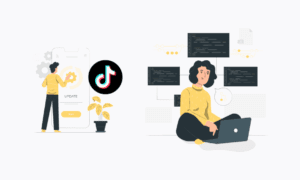The customer demand and improving technology have caused a rapid transformation of the marketing industry in 2025. Brands cannot use traditional strategies anymore because today’s market runs on immediate and personalized actions. Marketers who can balance creativity with data and automation with authenticity can grab a position in the market.
Campaigns can be better planned and executed using advanced technology such as AI and machine learning. At the same time, clients’ expectations and demand for transparency and agility have also increased. Hence, agencies and in-house teams must be ready to adapt, or they might risk becoming obsolete.
There are new innovative revenue models that have arisen due to the changing landscape. These models align better with performance and client value. Marketers must think about outcome-based pricing and subscription services rather than solely depending on retainers or project fees. This article will further provide information on these new models and their role in reshaping the business of marketing.
The Rise of Client-Centric Revenue Models in Marketing Agencies
Traditional revenue models bill customers according to a fixed price rather than considering the use of their service. However, client-centric revenue structures are flexible with their subscription plans. These factors have led to a shift of marketing agencies from traditional models to client-centric models.
Clients usually look for performance-based and outcome-driven pricing models as they provide measurable value. Agencies are rewarded by these new models for delivering real results and revenue increases rather than time spent on tasks.
The motive should be client success, along with agency compensation to create stronger partnerships and share incentives. Marketing agency partner programs play a key role in this shift, as they align the agency’s success with long-term client goals, creating a mutually beneficial relationship. Agencies are now focusing on the factors that drive impact rather than producing deliverables. This allows to make a more strategic approach to plan campaigns. It also engages both parties in long-term outcomes rather than short-term activities.
The biggest advantage of client-centric models is that they support the development of deeper, longer-term relationships. These relationships drive recurring revenue for a longer period. Partners that exhibit clear ROI and understand their evolving needs are more likely to be chosen by clients. With growing trust, the opportunity for collaboration also increases.
Adopting these models redefines the exchange of value between agencies and clients. Agencies that perceive themselves as growth partners rather than just service providers will gain long-term profit.
Different Types of Smarter Revenue Models for Marketing Agencies in 2025
Agencies are rethinking the price and value with the evolving market in 2025. The rising smarter revenue models reflect the clients’ expectations for transparency and performance. These models are preferred because they look for measurable outcomes by aligning agency success. They go beyond traditional fee structures and prioritize the success of the agency.
Outcome-Based Pricing: Aligning Agency Success with Client Goals
The shift from hourly billing to outcome-based pricing reflects a broader industry move toward performance accountability. In this model, agencies are compensated based on the results they deliver, not just the time invested. Clients pay for impact, and agencies earn more when their strategies perform well.
There are several types of outcome-based models in practice. The most commonly used models in digital advertising are pay-per-click (PPC) and cost-per-acquisition (CPA) models. Some agencies offer conversion-driven pricing, which means their fees depend on lead generation or sales metrics. Others take it further with revenue-sharing agreements, where compensation is a percentage of sales or profits generated through agency work.
Try to align compensation with client outcomes to strengthen trust and encourage innovation. Agencies are given targets to complete and are provided with incentives to improve campaigns and refine strategies. Agencies must define clear performance metrics to work with outcome-based pricing effectively.
Both sides should agree on goals and reporting methods to retain transparency. Alignment and rectification can be ensured by regular communication. Agencies can become strategic partners by using outcome-based pricing rather than just being tagged as vendors.
Subscription and Retainer Models: Building Long-Term Client Relationships
Subscription and retainer models are advantageous for a marketing agency as they can predict recurring revenue. This prediction is essential for financial stability and strategic planning. Agencies provide a set of services on a monthly or quarterly basis rather than charging by the hour or project. This proves to be consistent for both the agency and the client. These models are known to support stronger client retention by promoting collaborative relationships. They help agencies to focus on long-term goals rather than short-term wins. Whereas, the clients gain dependable access to ongoing marketing expertise. Agencies can invest in talent and innovation with the increase in cash flow.
Structuring an effective subscription or retainer agreement starts with understanding client priorities and setting clear deliverables. Packages might include content creation, campaign management, analytics reporting, or SEO, tailored to match the client’s evolving needs. Flexibility is essential; the agreement should allow room for adjustments as strategies shift. Value delivery must remain front and center. Agencies should continuously assess outcomes and refine service offerings to align with client expectations. Proactive communication, monthly reporting, and quarterly strategy reviews help reinforce the partnership and demonstrate ongoing value.
To ensure sustainability, long-term contracts should balance agency capacity with client demand. Clear service levels, transparent pricing, and mutually agreed-upon goals protect both sides and strengthen trust over time. By focusing on consistency, alignment, and value, subscription and retainer models allow agencies to build more meaningful, scalable relationships, turning clients into long-term collaborators rather than one-time customers.
Freemium Models: Attracting Clients Through Value-Added Services
Freemium models are successfully attracting marketing agencies due to their strategic approach to lead generation and client acquisition. These agencies create seamless entry points by offering basic services for free. This helps the customers to try and experience value before committing financially. This is similar to the SaaS, which works in service-based marketing environments.
Freemium models offer limited access to tools and templates, enough to aware customer about the genuine utility while showcasing the agency’s capabilities. Customized strategy and full-scale campaign execution are premium services that are reserved for paying clients. This layered approach builds trust and demonstrates ROI early in the relationship.
This model has the potential to attract a broader audience, including startups and smaller businesses with limited budgets. They let the startups and small businesses utilize the limited tools to experience the advantages. They convert into paying clients once they recognize the benefits of expanded support. The key factors on which the transition depends are strategic nurturing and targeted upselling.
The freemium approach is advantageous, but it comes with challenges. It requires careful monitoring of resource allocation so that the free users don’t abuse the operational capacity or dilute premium service quality. Agencies should draw the boundaries between free and paid offerings to gain the desired profits while managing expectations. Freemium models can serve as powerful growth engines when thoughtfully executed. They enable easy entry and build brand loyalty through their strategic approaches. These models are best for agencies that are looking to expand reach while maintaining service integrity.
Dynamic and Value-Based Pricing: Customizing Fees to Client Needs
Dynamic and value-based pricing models enable marketing agencies to move beyond flat fees, aligning their compensation more closely with project scope, complexity, and client goals. These models emphasize flexibility, charging based on the value delivered rather than just the time or effort involved. With dynamic pricing, agencies tailor their fees according to factors such as campaign size, market competitiveness, and client budget. Value-based pricing goes further, tying compensation to the perceived or measurable impact of the work, such as increased brand awareness, revenue growth, or market share expansion.
This approach ensures fairer compensation for high-impact work and improves client satisfaction by emphasizing results. Clients appreciate pricing that reflects outcomes, not just services rendered, which fosters trust and long-term partnerships. To implement value-based pricing effectively, agencies often use tiered packages or customized service bundles. These options help clients choose based on their priorities while giving agencies room to scale services and pricing accordingly.
Clear communication is essential in this model. Agencies must educate clients on how pricing correlates with outcomes and what factors influence the cost. Transparency in methodology helps avoid misunderstandings and reinforces the agency’s strategic role. Ultimately, dynamic and value-based pricing aligns agency incentives with client success. It rewards creativity, strategic thinking, and performance, transforming the client-agency relationship into a value-driven partnership rather than a transactional exchange.
Summing Up
In 2025, smarter revenue models are reshaping how marketing agencies operate, deliver value, and grow sustainably. From outcome-based pricing to subscription services, freemium approaches, and dynamic models, each framework reflects a shift toward performance, transparency, and client-centricity. These models not only align agency compensation with results but also strengthen trust and foster long-term partnerships.
To stay competitive, agencies must embrace innovation, not just in campaign execution but also in how they price and position their services. Traditional billing structures are giving way to flexible, scalable alternatives that reward impact and deepen client relationships.
Adapting to these changes requires more than just operational tweaks; it demands a mindset shift. Agencies should prioritize value delivery, invest in clear communication, and remain agile in structuring engagements. By doing so, they position themselves not merely as service providers, but as strategic growth partners—ready to lead in a rapidly evolving marketing landscape.



































